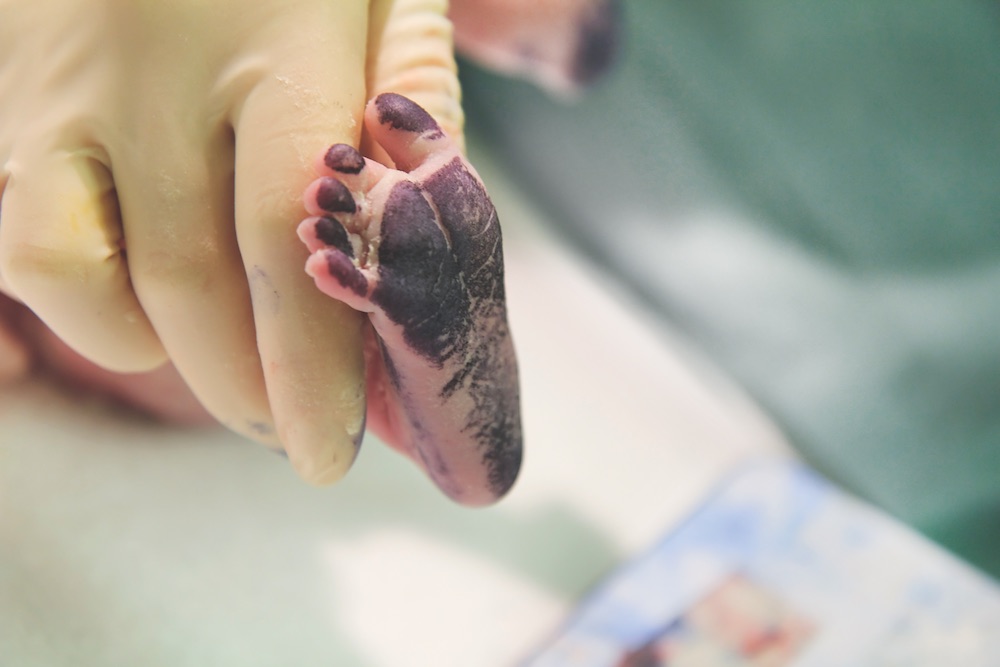Fontanelle, episiotomy, meconium—oy vey! With all that jargon spinning round in your head, you could really feel such as you’re again in grade faculty staring down a vocabulary quiz. And that’s not a distraction you want if you’re making an attempt to get a tiny human out of your physique. Learn up on the commonest technical terminology, so that you’ll be a whiz at any phrases your labor nurse throws at you. With our useful glossary, you’ll be fluent very quickly!
Anatomy
Amniotic sac
Generally known as a “bag of waters” or “membranes,” this sac of clear amniotic fluid is the place your itty-bitty bean grows contained in the uterus. Your child’s waterbed cushions her from damage, helps keep a relentless temperature and protects her from an infection. A very powerful factor you want to know? When it ruptures and your water breaks (by itself or together with your care supplier’s assist), child is coming quickly.
Cervix
This slender, neck-like passage makes up the decrease a part of the uterus and connects it to the vagina. The cervix is about 1 inch extensive, however it opens throughout childbirth (see: dilation), so child can cross by to make her exit.
Wire blood
You guessed it—it’s the blood left within the umbilical wire and placenta after beginning. This blood is full of stem cells which are genetically distinctive to your new child and shut relations. It may be collected, saved or donated for future medical use.
Fontanelle
Nicknamed “comfortable spots” on an toddler’s cranium, fontanelles are areas the place cranium bones come collectively however have but to harden. A child could have a number of; discover them on the high, again and sides of her noggin. These gaps enable the top to compress because it passes by the beginning canal. Don’t fear: Every little thing will shift again to regular and solidify quickly sufficient.
Perineum
Extending from the anus to the opening of the vagina, this space of tissue and muscle can tear (or may be deliberately minimize by your well being care supplier) throughout supply (see: episiotomy).
Placenta
This organ attaches to the liner of the uterus throughout being pregnant and retains child’s blood provide separate from yours. Bear in mind, after your new arrival is on the skin, you’ll nonetheless must ship the placenta. Contractions assist cross it, however you’ll hardly discover—you’re going to be too busy looking at that candy face.
Umbilical wire
This wire is important in getting child the oxygen and vitamins she wants, all of which come from mama’s bloodstream. It’s inconceivable to overlook this (on common) 20-inch wire within the labor room. Not lengthy after beginning, it’ll be clamped about 2 inches from child’s stomach button and once more close to the placenta earlier than it’s minimize in between. Breathe simple—neither you nor your mini will really feel a factor!
Bodily modifications
Contractions
The uterine muscle mass (those that assist push child down the beginning canal) periodically tighten and calm down, which is what’s known as a contraction. They’ll develop stronger and are available extra ceaselessly as labor progresses.
Crowning
That is the second when your babe’s head pushes by the absolutely dilated cervix and into the beginning canal. It’s been dubbed the “ring of fireside” due to the burning sensation that happens because the perineum stretches out.
Dilation
Measured in centimeters from Zero to 10, this explains how a lot your cervix has opened in preparation for childbirth. Ideally, you wish to get to a wide-open 10 as a result of being “absolutely dilated” means you can begin pushing.
Effacement
Measured on a p.c scale, this time period describes the softening and thinning of the cervix. Increased is best. A hundred percent effaced, generally known as a “paper skinny” cervix, is when it’s time to push.
Transition
Following lively labor however earlier than pushing, that is the part when your cervix dilates from eight centimeters all the way in which to 10. Contractions can be strongest and most frequent at the moment; fortunately, it’s the shortest part.
Gear and procedures
Amniotomy
That is the unreal rupturing of the amniotic sac, generally carried out with an amniotic hook (image a plastic crochet needle), in an try and induce or pace up labor.
Episiotomy
As a part of this process, an incision is made to the perineum to widen the vaginal opening for supply. That is optionally available, so your physician ought to ask to your permission first.
Exterior fetal monitor (EFM)
Utilizing two belts throughout your stomach, this non-invasive system is used intermittently all through labor to document child’s heartbeat and your contractions. Bear in mind, it does restrict mobility when in use.
Forceps
These tong look-alikes may be used to help supply by making use of a grip on the infant’s head and gently pulling outward.
Inner fetal monitor (IFM)
This monitor can solely be used if the amniotic sac has ruptured. It’s extra invasive, so it’s largely utilized in high-risk pregnancies or if the exterior monitor isn’t giving an correct studying. With an IFM, a small fetal scalp electrode is positioned on child’s head to measure her coronary heart fee.
Vacuum extractor
This suctioning software incorporates a metallic or plastic cup with a deal with and vacuum pump. The cup is connected to child’s head throughout a contraction (whereas mama pushes) to help along with her exit. It’s really helpful provided that labor isn’t progressing or a right away supply is critical due to well being dangers.
Drugs
Epidural
This block-all-feeling ache reliever numbs the decrease a part of your physique whereas permitting you to remain acutely aware and alert. It’s administered constantly throughout labor by a catheter that’s threaded by a needle close to your spinal wire.
Narcotics
In case your nurse mentions these, she’s speaking about ache relievers. (Examples embrace morphine, fentanyl, Nubain, Demerol and Stadol.) These medicines are given in early or lively labor by way of IV or injection. They may boring ache—however not get rid of it, and results aren’t localized, which implies your total physique will really feel it.
Pitocin
This artificial type of the physique’s pure hormone oxytocin stimulates contractions of the uterus, which is why this drug is used to induce labor.
Spinal block
Like an epidural, this anesthetic numbs your decrease physique. Not like epidurals, it’s a one-time injection into the spinal fluid that wears off after a couple of hours.
Postpartum
Afterbirth
The placenta and membranes which are expelled from the uterus after labor and supply.
APGAR rating
This postbirth evaluation is taken each one and 5 minutes after beginning to measure your child’s look, pulse, grimace, exercise and respiration (APGAR). Every is rated on a scale of Zero to 2; add the 5 numbers collectively to your tot’s complete rating (Zero-10) and a fast analysis of her well being.
Colostrum
Skinny and white in look, this fluid is a precursor to mama’s breast milk manufacturing. It’s excessive in protein, low in fats and filled with antibodies, which occurs to be simply what newborns want.
Meconium
Sticky and darkish (nearly black) in coloration, this tar-like substance describes your infant’s first bowel actions—not one thing you need for the infant guide. It should possible make an look within the first 48 hours and final by day 4, when stools change due to your babe’s new weight loss program.
Vernix
The waxy, cream-colored substance that coats and protects your bundle’s pores and skin in utero most likely isn’t the way you imagined seeing your child for the primary time, however will probably be washed—or wiped—off quickly after beginning.















You must be logged in to post a comment Login